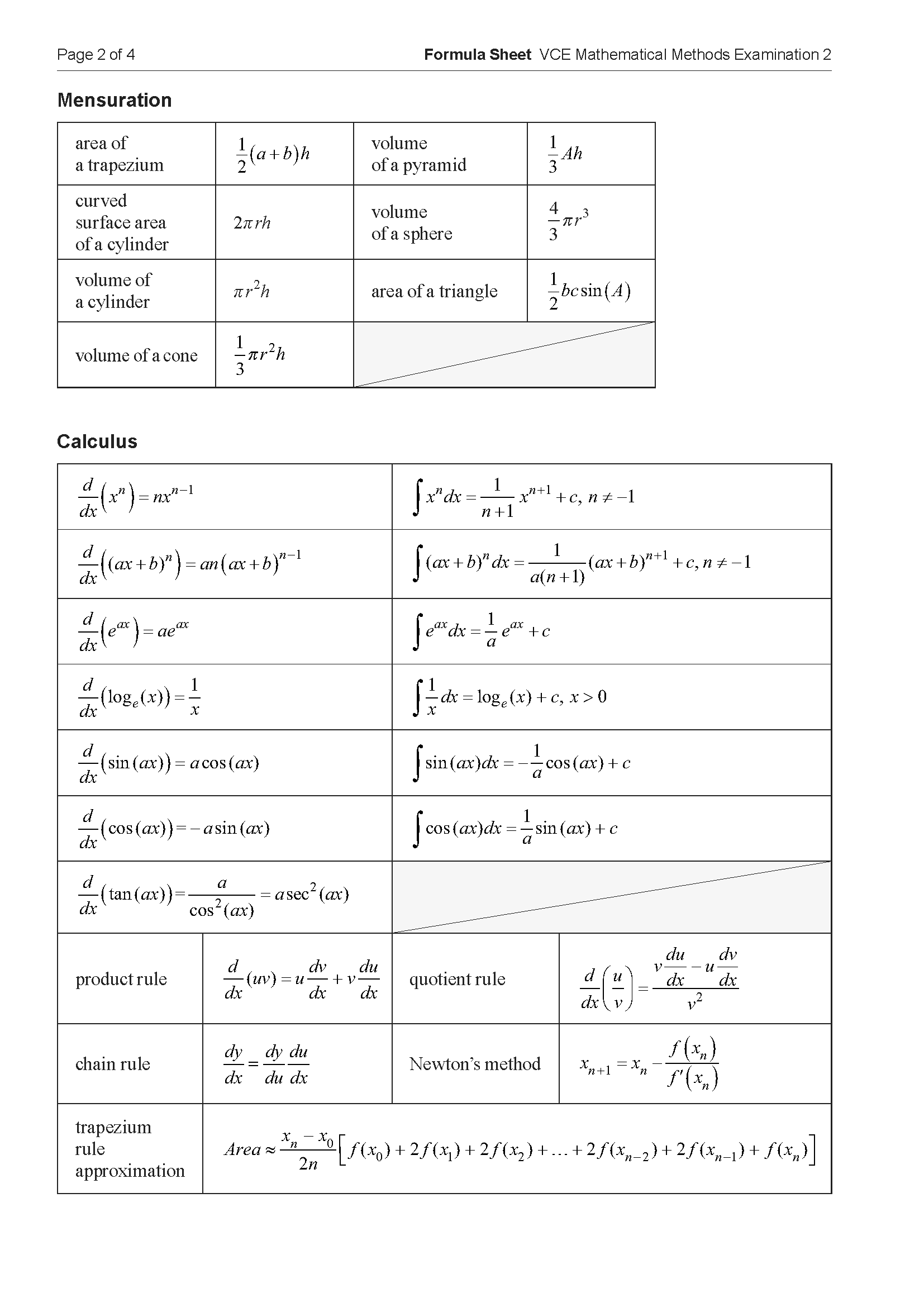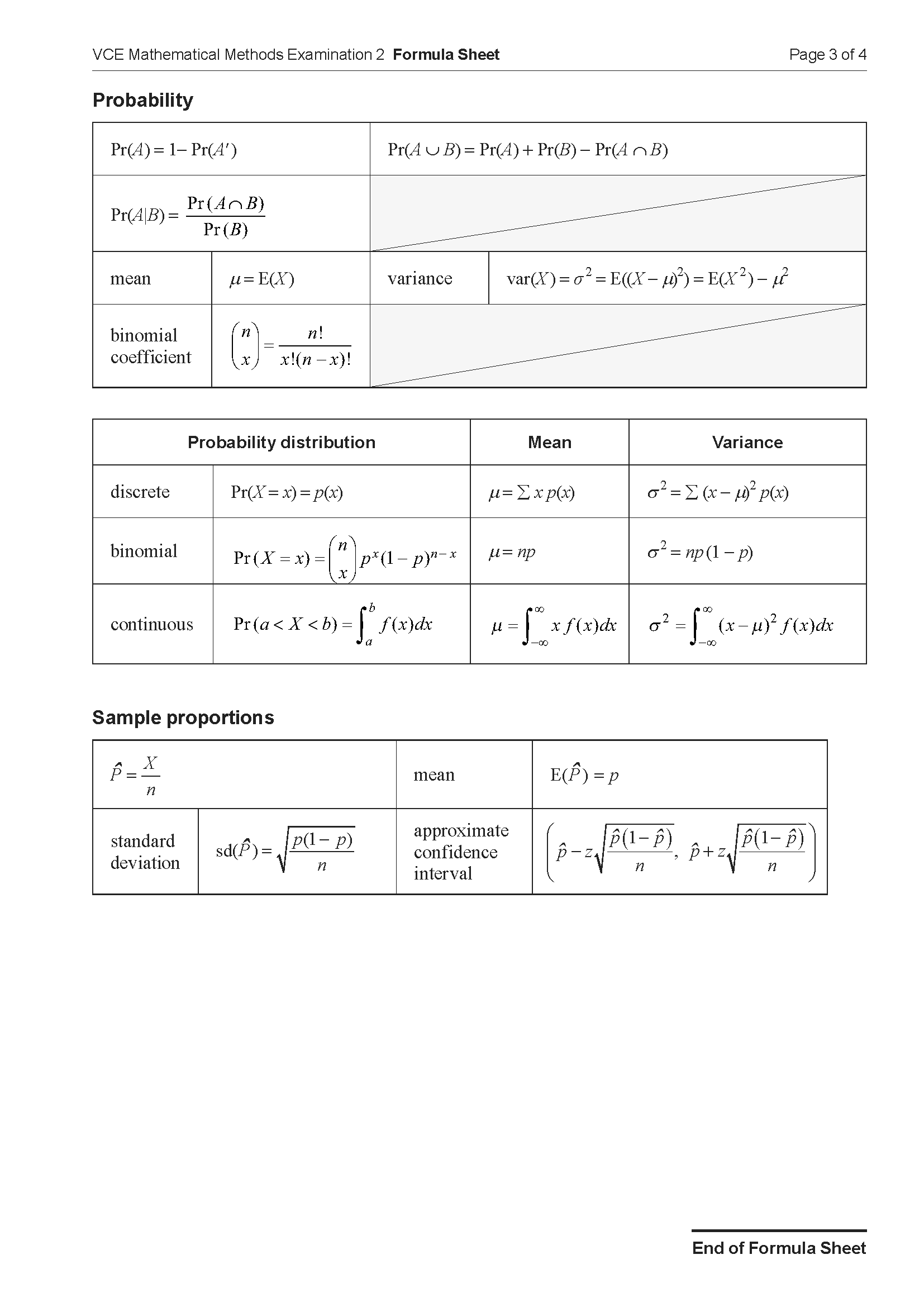VCE Maths Methods Functions Mini Test 9
Number of marks: 6
Reading time: 1 minute
Writing time: 9 minutes
Section A – Calculator Allowed
Instructions
• Answer all questions in pencil on your Multiple-Choice Answer Sheet.
• Choose the response that is correct for the question.
• A correct answer scores 1; an incorrect answer scores 0.
• Marks will not be deducted for incorrect answers.
• No marks will be given if more than one answer is completed for any question.
• Unless otherwise indicated, the diagrams in this book are not drawn to scale.
Let \( g(x) = x + 2 \) and \( f(x) = x^2 - 4 \).
If h is the composite function given by \( h: [-5, -1) \to R, h(x) = f(g(x)) \), then the range of \(h\) is
- A. (-3, 5]
- B. [-3, 5)
- C. (-3, 5)
- D. (-4, 5]
- E. [-4, 5]
Consider the function \(f:[a, b) \to R, f(x) = \frac{1}{x}\), where \(a\) and \(b\) are positive real numbers.
The range of \(f\) is
- A. \(\left[\frac{1}{a}, \frac{1}{b}\right)\)
- B. \(\left(\frac{1}{b}, \frac{1}{a}\right]\)
- C. \(\left[\frac{1}{b}, \frac{1}{a}\right)\)
- D. \(\left(\frac{1}{b}, \frac{1}{a}\right)\)
- E. \([a, b)\)
The point \(A(3, 2)\) lies on the graph of the function \(f\). A transformation maps the graph of \(f\) to the graph of \(g\), where \(g(x) = \frac{1}{2}f(x-1)\). The same transformation maps the point \(A\) to the point \(P\).
The coordinates of the point \(P\) are
- A. \((2, 1)\)
- B. \((2, 4)\)
- C. \((4, 1)\)
- D. \((4, 2)\)
- E. \((4, 4)\)
Let \(f\) and \(g\) be two functions such that \(f(x) = 2x\) and \(g(x+2) = 3x+1\).
The function \(f(g(x))\) is
- A. \(6x-5\)
- B. \(6x+1\)
- C. \(6x^2+1\)
- D. \(6x-10\)
- E. \(6x+2\)
The function \(f\) has the property \(f(x + f(x)) = f(2x)\) for all non-zero real numbers \(x\).
Which one of the following is a possible rule for the function?
- A. \(f(x) = 1-x\)
- B. \(f(x) = x-1\)
- C. \(f(x) = x\)
- D. \(f(x) = \frac{x}{2}\)
- E. \(f(x) = \frac{1-x}{2}\)
Consider the functions \(f:\mathbb{R}^+ \to \mathbb{R},\ f(x) = x^{\frac{p}{q}}\) and \(g:\mathbb{R}^+ \to \mathbb{R},\ g(x) = x^{\frac{m}{n}}\), where \(p, q, m\) and \(n\) are positive integers, and \(\frac{p}{q}\) and \(\frac{m}{n}\) are fractions in simplest form.
If \(\{x : f(x) > g(x)\} = (0, 1)\) and \(\{x : g(x) > f(x)\} = (1, \infty)\), which of the following must be false?
- A. \(q > n\) and \(p = m\)
- B. \(m > p\) and \(q = n\)
- C. \(pn < qm\)
- D. \(f'(c) = g'(c)\) for some \(c \in (0, 1)\)
- E. \(f'(d) = g'(d)\) for some \(d \in (1, \infty)\)
End of examination questions
VCE is a registered trademark of the VCAA. The VCAA does not endorse or make any warranties regarding this study resource. Past VCE exams and related content can be accessed directly at www.vcaa.vic.edu.au

